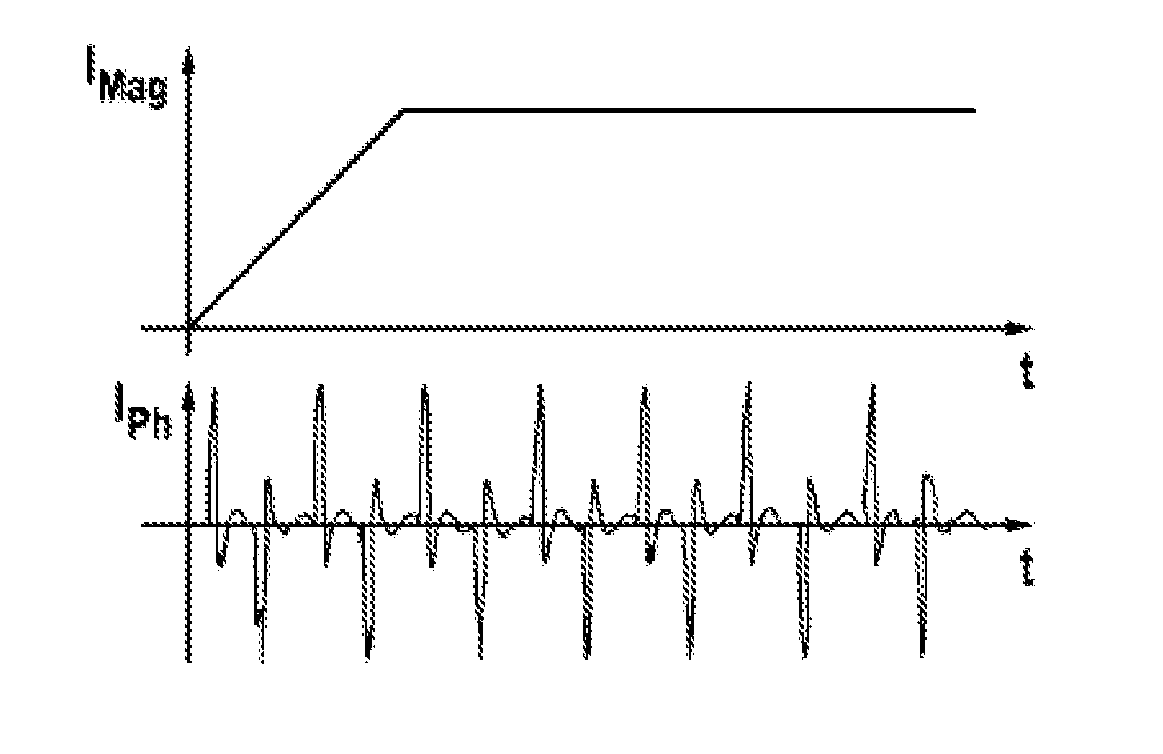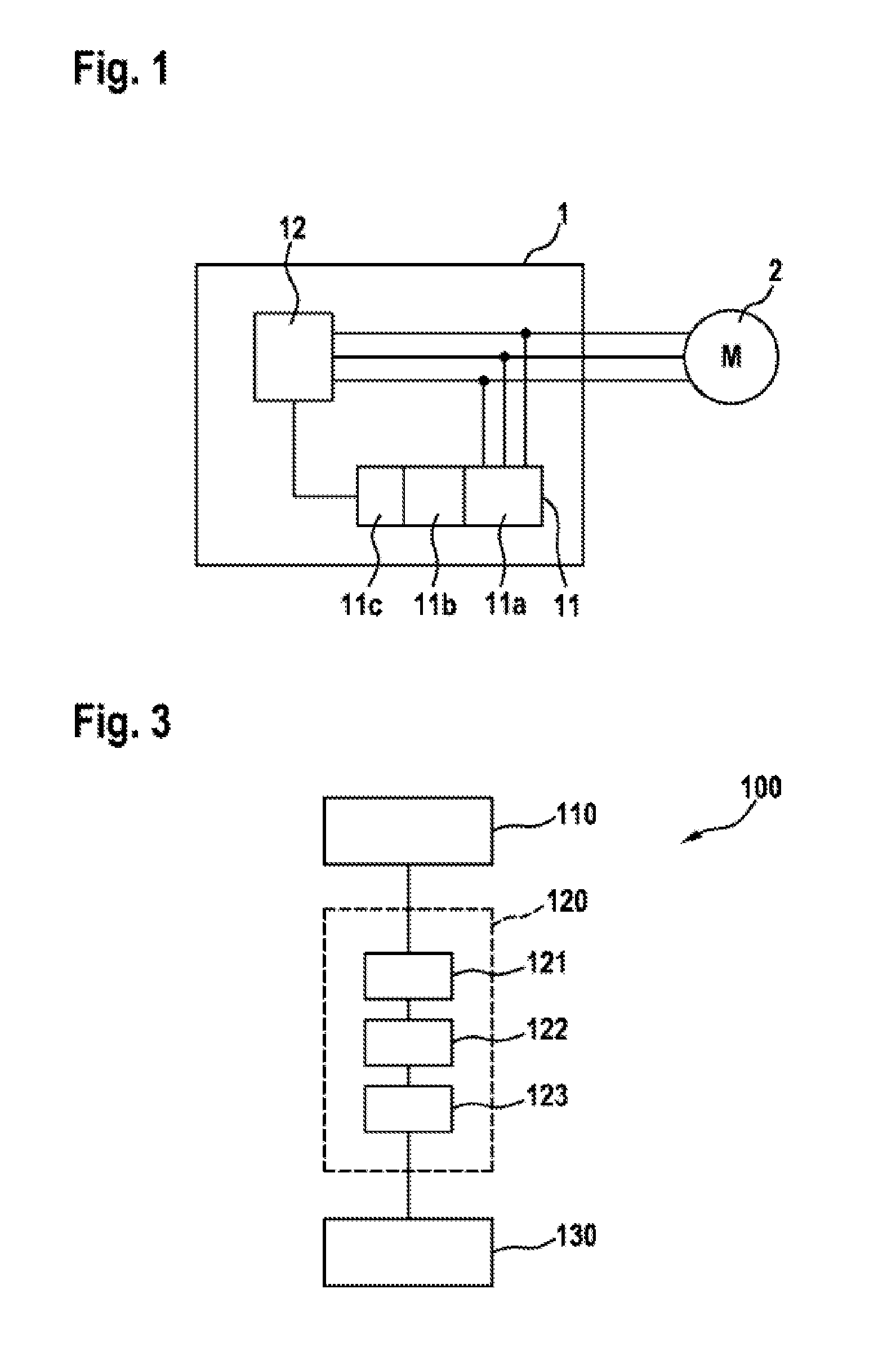Control device for an asynchronous machine and method for operating an asynchronous machine
a control device and asynchronous machine technology, applied in the direction of electronic commutation motor control, process and machine control, instruments, etc., can solve the problem of inability to field-oriented closed-loop control of asynchronous machines, achieve significant faster magnetization, prevent undesired torque, and increase the functional reliability of asynchronous machines
- Summary
- Abstract
- Description
- Claims
- Application Information
AI Technical Summary
Benefits of technology
Problems solved by technology
Method used
Image
Examples
Embodiment Construction
[0024]FIG. 1 shows a schematic illustration of a control device 1 for an asynchronous machine 2 as forms the basis of an embodiment of the present invention. The asynchronous machine 2 can be here any asynchronous machine, in particular an asynchronous motor with short-circuit rotor. The asynchronous machine is preferably a three-phase asynchronous machine. Such an asynchronous machine comprises a rotatably mounted rotor in the interior and an exterior fixed stator. A plurality of stator phases which are offset equidistantly from one another are let into the stator here. These stator phases are embodied, for example, as wire windings.
[0025]Since the rotor voltage is induced by means of the stator magnetic field in asynchronous machines, there is firstly no rotor field in the non-energized state in asynchronous machines. This rotor field firstly has to be built up during a magnetization phase. Conventional determination of the rotor field angle by measuring the inductivity is therefo...
PUM
 Login to View More
Login to View More Abstract
Description
Claims
Application Information
 Login to View More
Login to View More - R&D
- Intellectual Property
- Life Sciences
- Materials
- Tech Scout
- Unparalleled Data Quality
- Higher Quality Content
- 60% Fewer Hallucinations
Browse by: Latest US Patents, China's latest patents, Technical Efficacy Thesaurus, Application Domain, Technology Topic, Popular Technical Reports.
© 2025 PatSnap. All rights reserved.Legal|Privacy policy|Modern Slavery Act Transparency Statement|Sitemap|About US| Contact US: help@patsnap.com



